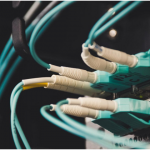Cybersecurity is the penultimate thing in business today. With all the regulations on data security and global cyber attacks, it is essential for firms. Cybersecurity has been all about keeping up with the cyber deceptions. These deceptions are cover for persistent attacks on systems worldwide.
Our Cybersecurity systems need to be vigilant and adaptive to such deceptions. There were 812.67 million malware infections in 2018, and every year almost 92% of malware is delivered through emails.
Phishing attacks are also susceptible. Every minute about $17,000 is lost due to phishing attacks. Data security is another critical factor. Every year, $3.92 million is lost due to data breaches.
So, let’s get to know some of th Cybersecurity trends in 2020.
- Adaptive Defense:
In terms of Cybersecurity, adaptive defence is reactive. Reactive security is gauging the threat and producing a reactive response to the risk. But as time goes by, many hackers and attackers are changing their modus of Operandi.
It has forced the Cybersecurity experts to design the response to be adaptive according to the scale of the attack. Keeping the type, scale and mode of attack and equal reaction are produced through the adaptive response.
- Deep Leaning Integrations:
Deep Learning uses abstraction layers to achieve better learning of modules. Cybersecurity can achieve proper network security through deep learning integrations. DL uses a backpropagation technique for abstracted layers to determine the modules.
This is an advanced method that can be leveraged by Cybersecurity experts for detection of anomalies in network nodes.
- AI for Cybersecurity:
Using Artificial Intelligence for Cybersecurity is not new. But, with more cloud technologies and integrations of algorithmic models, it seems more evident. AI can help Cybersecurity experts to gather relevant data from multiple sources. Then they can analyze them for differences and respond.
- Authentication Security:
Modern authentication systems are multi-layered. Facial recognition, fingerprint authentication, and even biometrics like retinal scans are external layers. The encryption layer below this layer matters the most.
Multi-layer encryption has made the authentication more secure. But, there is a need for a more encrypted layer to ensure data security. For more advanced encryption layers, you need to have sound knowledge of encrypted coding.
- Cloud Security:
Most of the data exchange between systems and the users is done on cloud servers. The reason behind the cloud technologies being promoted more are, it reduces the need for local servers. Cloud networks are operated through several nodes.
These nodes are monitored for network stream behaviour. Any anomaly in the network stream means there is an intrusion. Cloud security is essential to detect such intrusions and prepare a valid defence for it.
Conclusion:
Cybersecurity poses a valid question of how to protect our systems from malware and phishing attacks. The answer is simple. Companies can leverage such emerging trends for their Cybersecurity. As the business grows, there will be more load on networks, and security needs will increase. So, buckle up and get the war mode on for better security.




Comments
0 comments